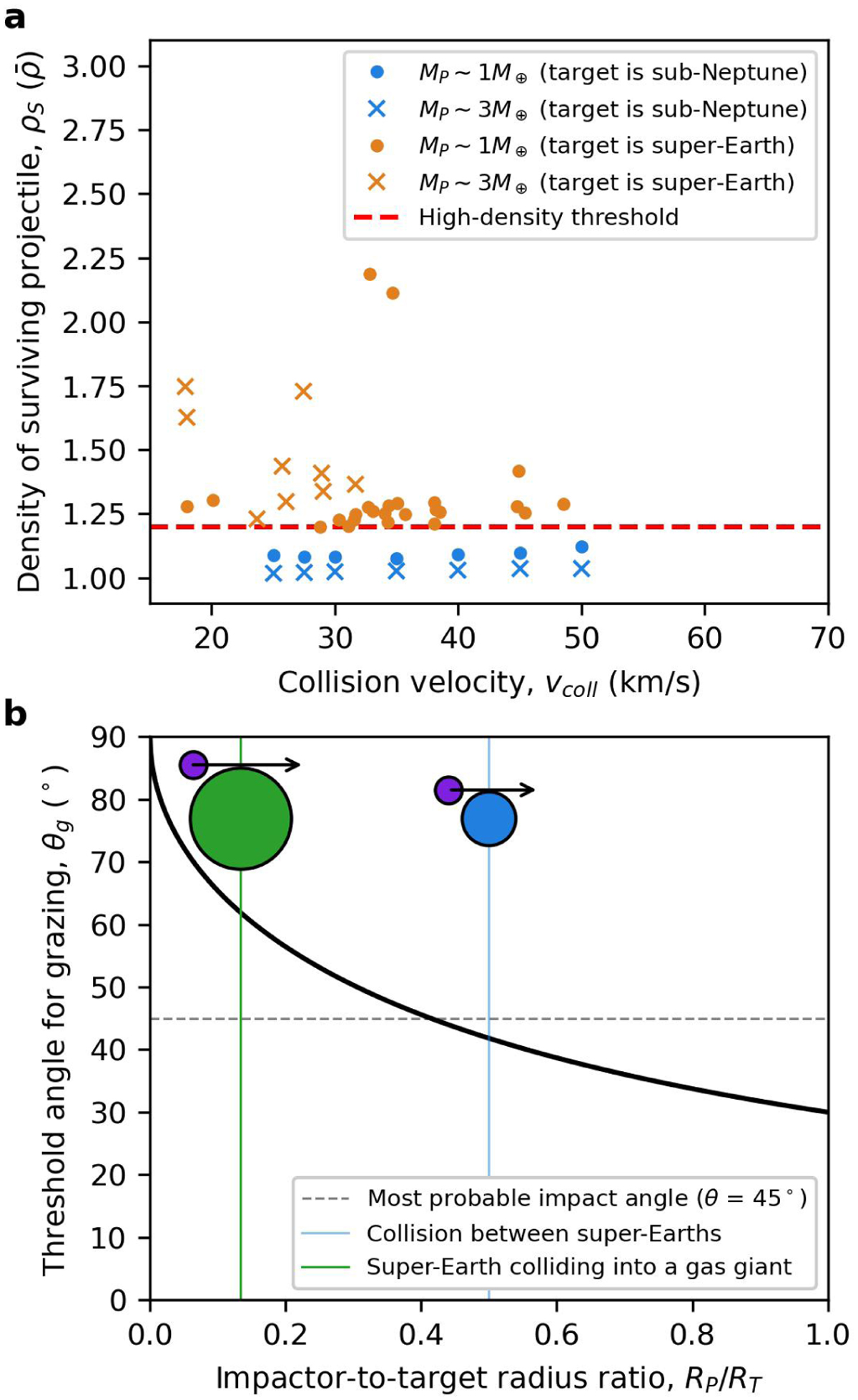Fig. 7

Download original image
Comparison of giant impacts among atmosphereless super-Earths to collisions involving atmosphere-rich targets. (a) Density of the surviving hit-and-run projectile, ρS, as a function of vcoll. The value of ρS is plotted in units of ![]() , which is the density of a planet with the same R and a bulk composition with the average local galactic abundance of iron and rock-forming elements. We assume θ = 45°. The predictions for the Sub-Neptune target are from the database of SPH simulations by Denman et al. (2022). The predictions for the super-Earth target are from our collision model described in Section 2.2.3. (b) Minimum impact angle, θg, required for the geometric center of a projectile to graze the surface of its target [Equation (9) in Asphaug 2010] as a function of their projectile-to-target radius ratio, RP/RT . A super-Earth with RP = 1.5 R⊕ grazes a Jupiter-sized planet (RT = 11.2 R⊕) for θ > θg = 60°. By contrast, if the target is a super-Earth with RT = 2 RP, θg is within 5° of the most probable impact angle of 45°.
, which is the density of a planet with the same R and a bulk composition with the average local galactic abundance of iron and rock-forming elements. We assume θ = 45°. The predictions for the Sub-Neptune target are from the database of SPH simulations by Denman et al. (2022). The predictions for the super-Earth target are from our collision model described in Section 2.2.3. (b) Minimum impact angle, θg, required for the geometric center of a projectile to graze the surface of its target [Equation (9) in Asphaug 2010] as a function of their projectile-to-target radius ratio, RP/RT . A super-Earth with RP = 1.5 R⊕ grazes a Jupiter-sized planet (RT = 11.2 R⊕) for θ > θg = 60°. By contrast, if the target is a super-Earth with RT = 2 RP, θg is within 5° of the most probable impact angle of 45°.
Current usage metrics show cumulative count of Article Views (full-text article views including HTML views, PDF and ePub downloads, according to the available data) and Abstracts Views on Vision4Press platform.
Data correspond to usage on the plateform after 2015. The current usage metrics is available 48-96 hours after online publication and is updated daily on week days.
Initial download of the metrics may take a while.


